Fourteen-year-old Indian photographer Udayan Rao Pawar and South African lensman Greg du Toit have been named winners of this year's Wildlife Photographer of the Year contest co-owned by London's Natural History Museum and BBC Worldwide.
The duo beat almost 43,000 entries from 93 countries.
The two images were selected from 18 individual category winners, depicting nature at its finest, from displays of peculiar animal behaviour to stunning landscapes.
We bring for our readers the 10 best winning entries.
Click on NEXT to go further...
Mother's little headful
Photographs: Udayan Rao Pawar/Wildlife Photographer of the Year 2013
One night, Udayan Rao Pawar camped near a nesting colony of gharials on the banks of the Chambal river -- two groups of them, each with more than 100 hatchlings.
Before daybreak, he crept down and hid behind rocks beside the babies.
"I could hear them making little grunting sounds. Very soon a large female surfaced near the shore, checking on her charges. Some of the hatchlings swam to her and climbed onto her head. Perhaps it made them feel safe."
It turned out that she was the chief female of the group, looking after all the hatchlings. Gharials were once found in rivers all over the Indian subcontinent.
Today, just 200 or so breeding adults remain in just 2 per cent of the former range. "The ChambalRiver is the gharial's last stronghold," says Udayan, "but is threatened by illegal sand-mining and fishing."
Click on NEXT to see more PHOTOS...
Essence of elephants
Photographs: Greg du Toit/Wildlife Photographer of the Year 2013
Ever since he first picked up a camera, Greg du Toit has photographed African elephants.
"For many years, I've wanted to create an image that captures their special energy and the state of consciousness that I sense when I'm with them. This image comes closest to doing that."
The shot was taken at a waterhole in Botswana's Northern Tuli Game Reserve, from a hide (a sunken freight container) that provided a ground-level view. Greg chose to use a slow shutter speed to create the atmosphere he was after and try "to depict these gentle giants in an almost ghostly way."
He used a wide-angle lens tilted up to emphasize the size of whatever elephant entered the foreground, and chose a narrow aperture to create a large depth of field so that any elephants in the background would also be in focus.
Greg had hoped the elephants would turn up before dawn, but they arrived after the sun was up. To emphasize the "mysterious nature" of these "enigmatic subjects", he attached a polarizing filter and set his white balance to a cool temperature.
The element of luck that added the final touch to his preparation was the baby elephant, which raced past the hide, so close that Greg could have touched her. The slow shutter speed conveyed the motion, and a short burst of flash at the end of the exposure froze a fleeting bit of detail.
Click on NEXT to see more PHOTOS...
The flight path
Photographs: Connor Stefanison/Wildlife Photographer of the Year 2013
Connor Stefanison's photography draws on the wilderness skills he acquired over a childhood spent largely outdoors.
This female barred owl had a territory near his home in Burnaby, British Columbia. He watched her for some time, familiarizing himself with her flight paths until he knew her well enough to set up the shot.
"I wanted to include the western red cedar and the sword ferns so typical of this Pacific coastal rainforest."
Setting up his camera near one of the owl's favourite perches, linked to a remote and three off-camera flashes, diffused and on low settings, he put a dead mouse on a platform above the camera and waited for the swoop that he knew would come.
"She grabbed the mouse, flew back to her perch and began calling to her mate. It is one of the most exciting calls to hear in the wild."
Click on NEXT to see more PHOTOS...
Snow moment
Photographs: Jasper Doest/Wildlife Photographer of the Year 2013
When photographing the famous Japanese macaques around the hot springs of Jigokudani, central Japan, Jasper Doest had become fascinated by the surreal effects created by the arrival of a cold wind.
Occasionally, a blast would blow through the steam rising off the pools. If it was snowing, the result would be a mesmerizing pattern of swirling steam and snowflakes, which would whirl around any macaques warming up in the pools.
But capturing the moment required total luck -- for Jasper to be there when the wind blew and for the monkeys to be in the pool. For that luck to arrive, he had to wait another year.
Returning the next winter, he determined to get the shot he'd been obsessing about. He set up using a polarizer to remove reflections from the water and create a dark contrasting background, and got ready to use fill-flash to catch the snowflakes.
"As it kept snowing, I stood there, willing the wind to pick up. I felt it just had to happen -- sometimes you can push your luck if I you just wait long enough." But as the steam started swirling above the water, there wasn't a monkey in sight.
"All of a sudden one adult appeared and jumped on a rock in the middle of the pool. When I started shaking off the snow, I knew this was the moment."
Click on NEXT to see more PHOTOS...
Dive buddy
Photographs: Luis Javier Sandoval/Wildlife Photographer of the Year 2013
The beaches of the Yucatan Peninsula, Mexico, near Cancun are traditional nesting sites for the endangered green turtle. But as Cancun has also grown as a holiday and dive resort, development has reduced the area available to turtles.
Today, though, many nest sites are protected, there are turtle hatcheries to help numbers increase, and there is publicity to help local people and resort owners value the natural riches of the region.
Luis Javier Sandoval earns enough from tourism photography to allow him time to document his beloved wildlife.
"The turtles are so used to seeing people in the water that they think we're just part of the environment," says Luis, which means he has been able to get to know individuals, recognizing them from the markings on their faces.
"This meter-long female, grazing on seagrass, took no notice of me, apart from glancing up briefly."
Recently, Luis has noticed what he suspects may be a new threat: at certain times of the year, a yellowish alga covers some of the seagrass. The suspicion is that the algal growth is the result of sewage from the resort, which has already affected the coral. What is clear is that the turtles avoid eating it.
Click on NEXT to see more PHOTOS...
The spat
Photographs: Joe McDonald/Wildlife Photographer of the Year 2013
For several hours, the noisy sounds of courtship and mating were all Joe McDonald was treated to as he sat, sweltering in the hot sun, in a boat on the Three Brothers River in Brazil's Pantanal.
So when the female jaguar finally emerged from the undergrowth and walked down to the river to drink, he was grateful for the photo opportunity. But that was just a start.
After slaking her thirst, the female flopped down on the sand. Then the male appeared. After drinking and scent-marking, he approached the female, who was lying in what appeared to be a pose of enticement.
At least, that's what both Joe and the male thought. She rose, growled and suddenly charged, slamming the male back as he reared up to avoid her outstretched claws. His own claws were sheathed.
"I couldn't believe the energy and intensity of those three seconds," says Joe. The pair then disappeared into the undergrowth to resume their courtship, leaving Joe with a sense of awe and a rare, winning image.
Click on NEXT to see more PHOTOS...
Sticky situation
Photographs: Isak Pretorius/Wildlife Photographer of the Year 2013
In May, the seafaring lesser noddies head for land to breed. Their arrival on the tiny island of Cousine in the Seychelles coincides with peak web size for the red-legged golden orb-web spiders.
The female spiders, which can grow to the size of a hand, create colossal conjoined webs up to 1.5 meters in diameter in which the tiny males gather. These are woven from extremely strong silk and are suspended up to six meters above the ground, high enough to catch passing bats and birds, though it's flying insects that the spiders are after.
Noddies regularly fly into the webs. Even if they struggle free, the silk clogs up their feathers so they can't fly.
This noddy was exhausted, says Isak Pretorius, "totally still, its fragile wing so fully stretched that I could see every feather". The only way to accentuate the female spider was to crop the wings. And it was only human intervention that saved the bird
Click on NEXT to see more PHOTOS...
Lucky pounce
Photographs: Connor Stefanison/Wildlife Photographer of the Year 2013
"Anticipating the pounce -- that was the hardest part," says Connor Stefanison, who had come to Yellowstone National Park in Wyoming, in search of wildlife as much as the spectacular landscape.
He had found this fox, his first ever, on his last day in the park. It was so absorbed in hunting that Connor had plenty of time to get out of the car and settle behind a rock.
It quartered the grassland, back and forth, and then started staring intently at a patch of ground, giving Connor just enough warning of the action to come.
When it sprung up, Connor got his shot. And when it landed, the fox got his mouse.
Click on NEXT to see more PHOTOS...
The water bear
Photographs: Paul Souders/Wildlife Photographer of the Year 2013
The fact that most images of polar bears show them on land or ice says more about the practical difficulties faced by humans than it does about the bears' behaviour. With adaptations such as thick blubber and nostrils that close, polar bears are, in fact, highly aquatic, and they spend most of their time hunting seals on sea ice and are capable of swimming for hours at a time.
Paul Souders took his Zodiac boat to Canada's Hudson Bay in midsummer to rectify this bias. He scouted for three days before he spotted a bear, this young female, on sea ice some 30 miles offshore.
"I approached her very, very slowly, and then drifted. It was a cat-and-mouse game." When the bear slipped into the water, he just waited. "There was just a flat world of water and ice and this polar bear swimming lazily around me. I could hear her slow, regular breathing as she watched me below the surface or the exhalation as she surfaced, increasingly curious. It was very special."
The light was also special, but for a sinister reason. The midnight sun was filtered through smoke from forest fires raging farther south, a symptom of the warming Arctic, the greatest threat facing the polar bear. As more and more sea ice melts earlier and earlier every spring, it becomes harder for the bears to hunt the seals they depend on.
Click on NEXT to see more PHOTOS...
The cauldron
Photographs: Sergey Gorshkov/Wildlife Photographer of the Year 2013
On November 29, 2012, Sergey Gorshkov received the call that he had long hoped for. Plosky Tolbachik -- one of two volcanoes in the Tolbachik volcanic plateau in central Kamchatka, Russia -- had begun to erupt.
"I've gone to the area many times, but it had been 36 years since the last eruption, so I dropped everything and went." The only way to approach it was by helicopter, but extreme cold (-40 C) meant Sergey had to wait until it was warm enough for the helicopter to take off.
Flying towards the volcano, the cloud of ash, smoke and steam was so thick that he couldn't see the crater. But every so often, a strong wind blew the clouds away, and he could see a 200-meter-high fountain of lava spouting out of the crater and fast-flowing, molten rivers of lava running down it (some of these would travel 10 kilometers, sweeping away everything in their path).
As gusts of hot air buffeted the helicopter, Sergey worked fast, strapped to the open door. "I just kept shooting, kept changing lenses and camera angles, knowing I had this one chance, hoping that I'd take one image that might do justice to what I was witnessing." That was indeed his last chance. At 1 am a new explosion happened, the ground rumbled, huge lava bombs threatened the campsite, and a heavy rain of ash and smoke made it impossible to take pictures.
Click on NEXT to go further...

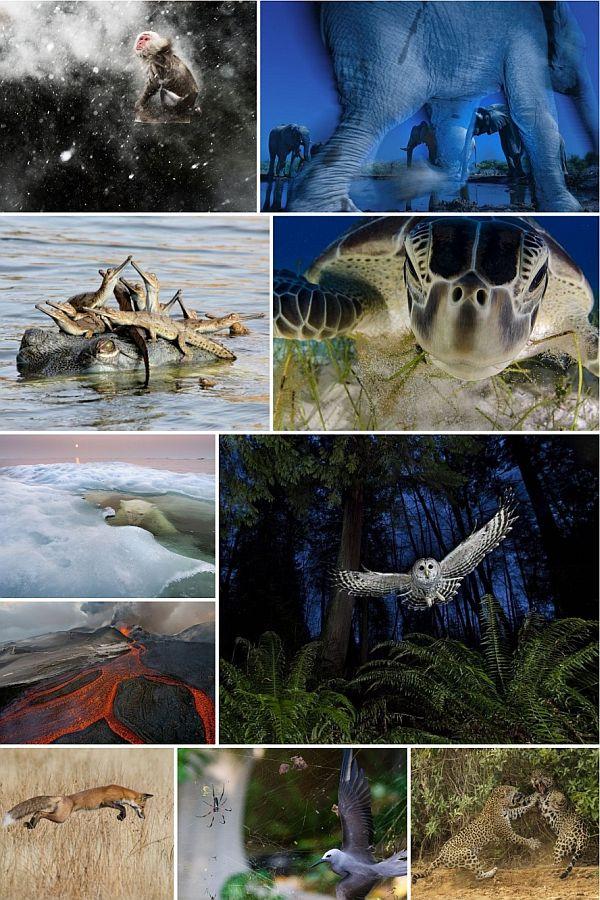

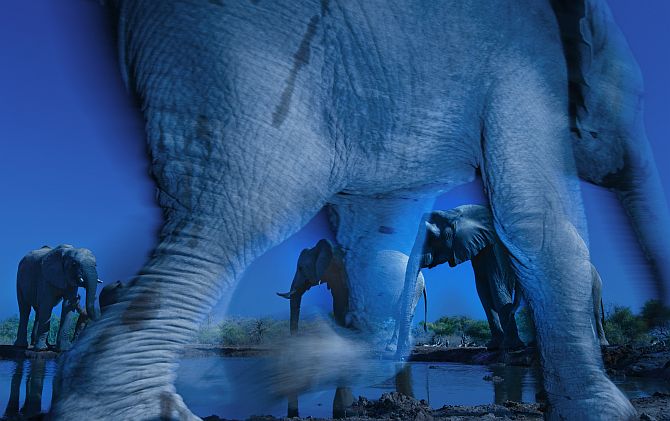
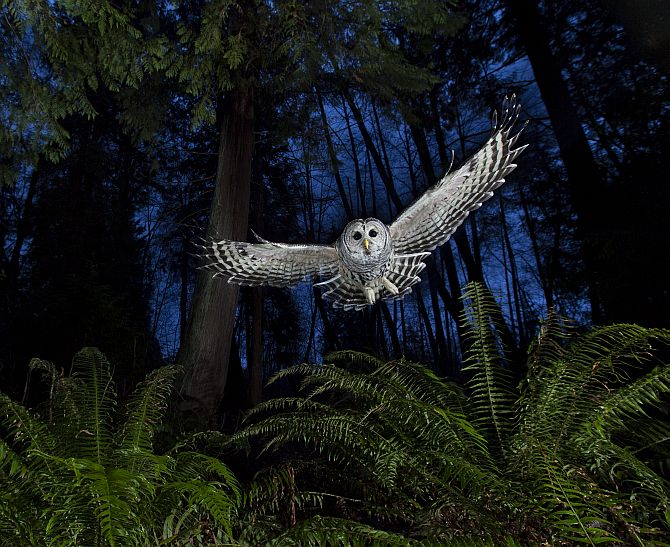
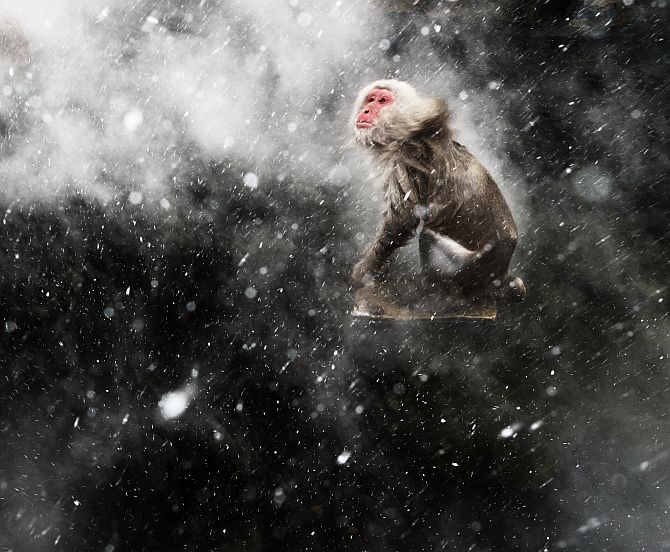
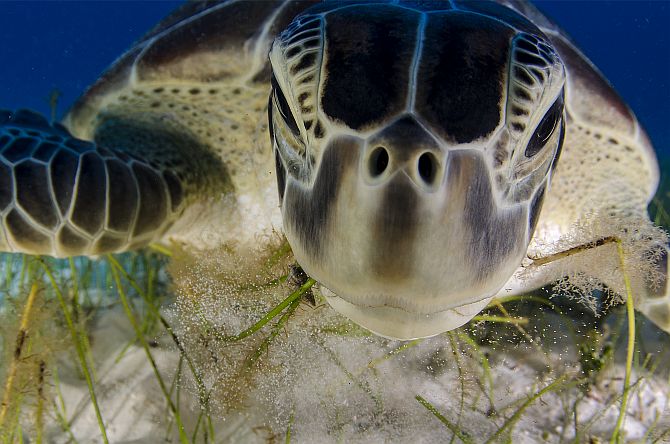
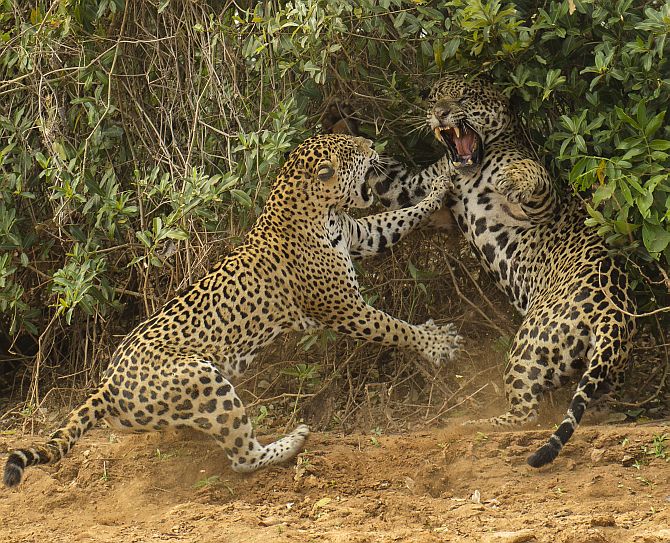
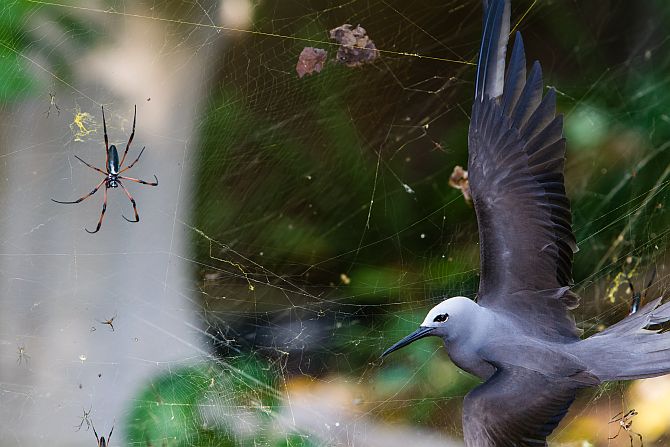
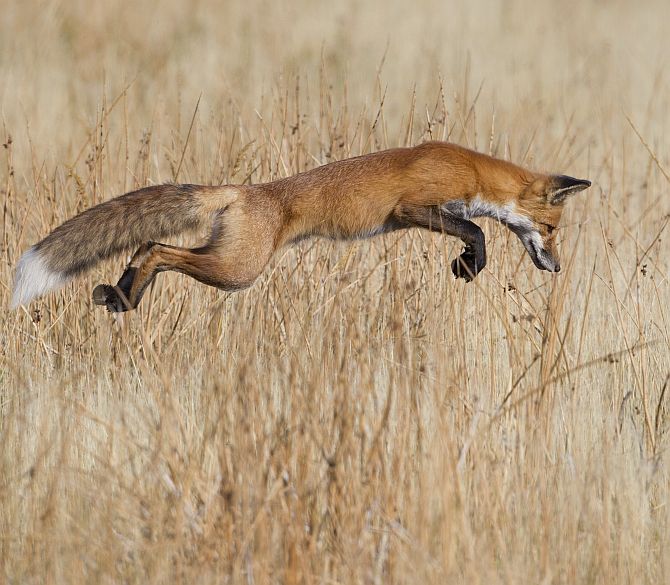
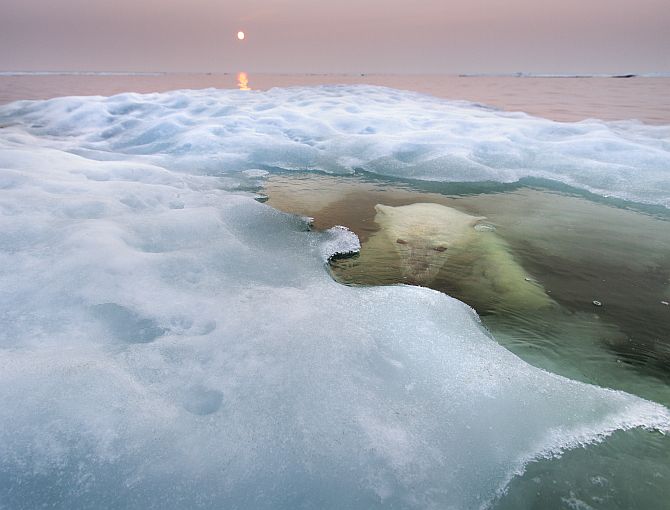
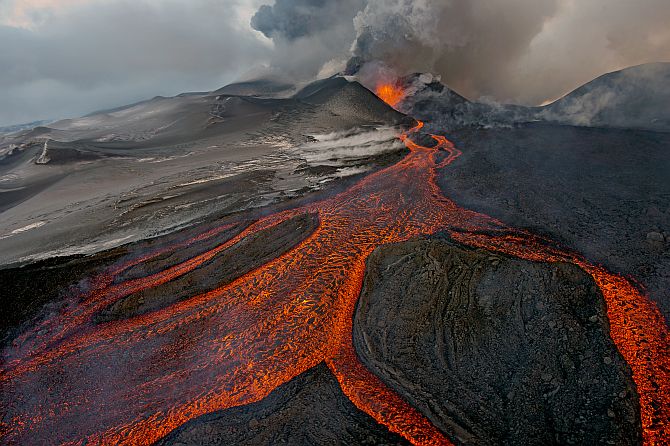
article